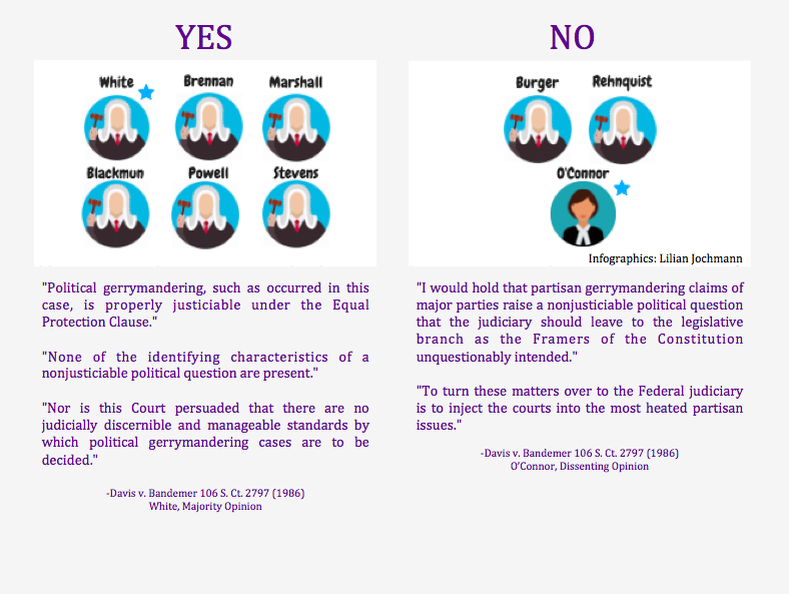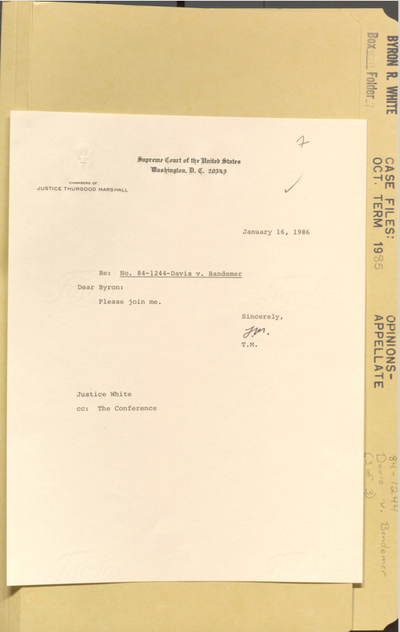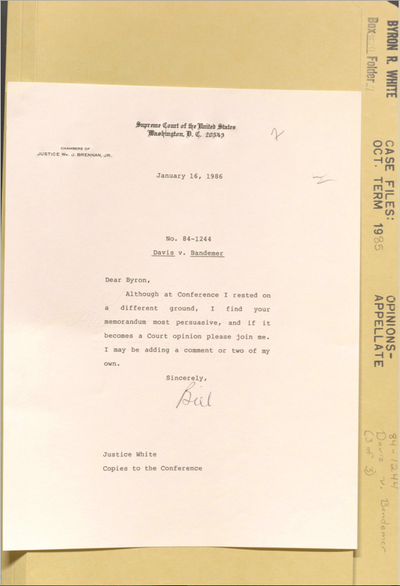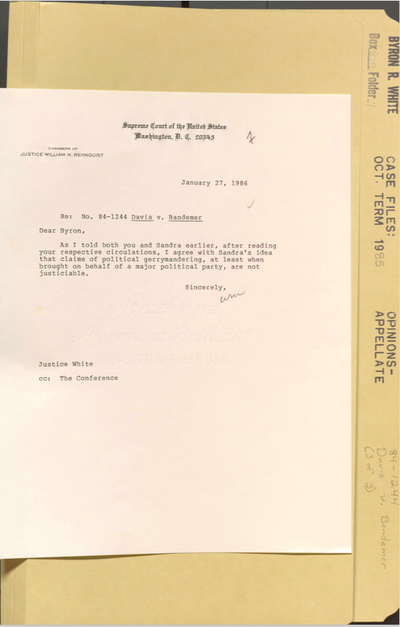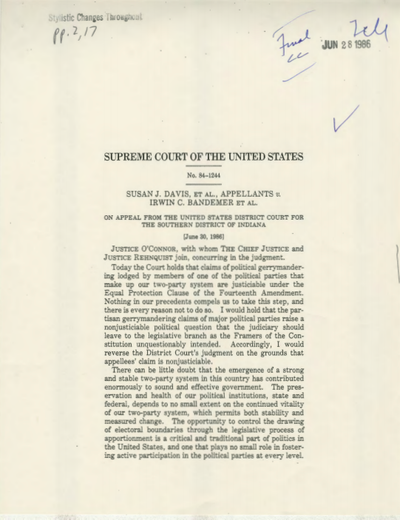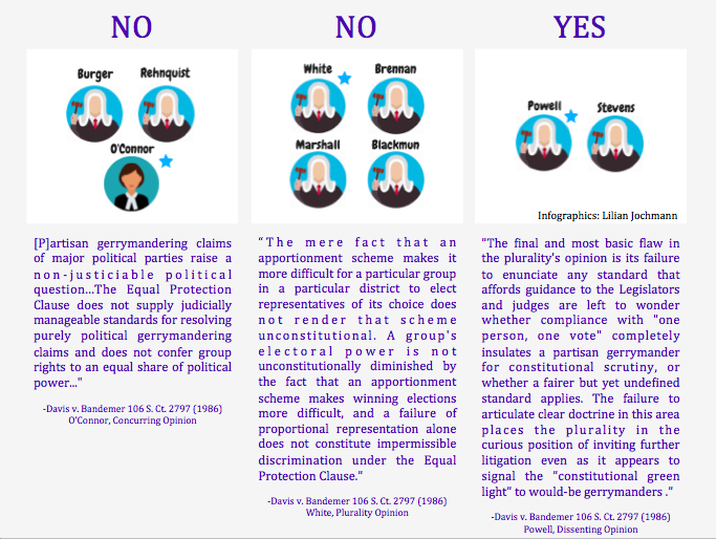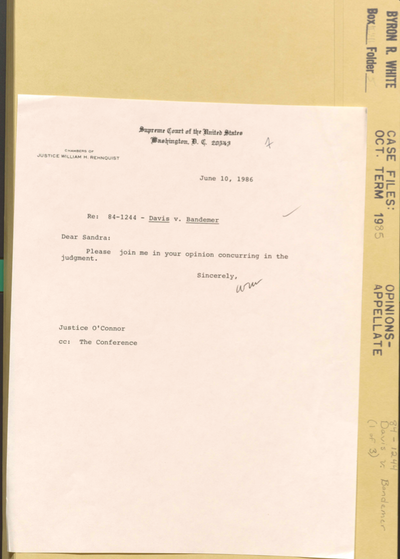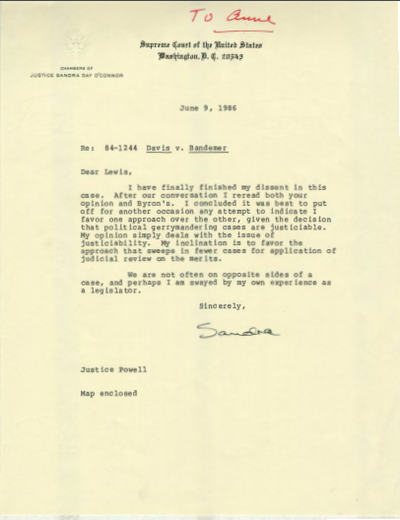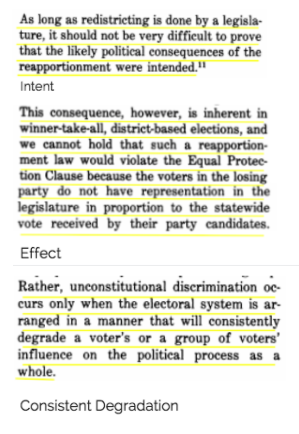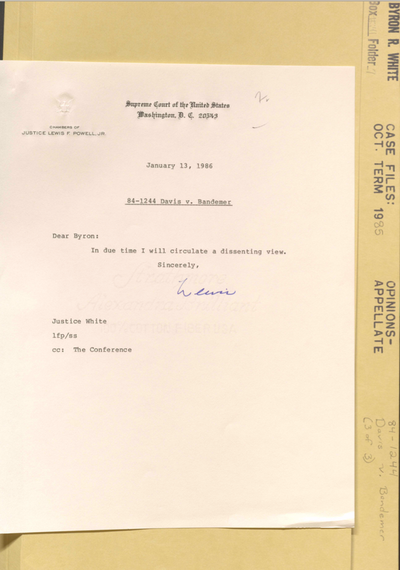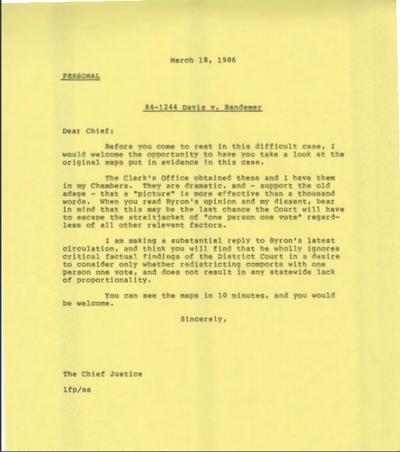(Palma J. Strand)
THE QUESTIONS
In Davis v. Bandemer, the Supreme Court answered two important questions:
Is Partisan Gerrymandering Justiciable* Under the Equal Protection Clause?
*justiciable: capable of being decided by legal principles or by a court of justice
- Merriam-Webster Dictionary
*justiciable: capable of being decided by legal principles or by a court of justice
- Merriam-Webster Dictionary
The 6-3 majority brought the Court into the partisan gerrymandering conflict for the first time. Justice White wrote the majority opinion, holding that the Court's previous rulings on malapportionment and racial gerrymandering cleared the path for partisan gerrymandering to be justiciable. In the dissent, Justice O’Connor argued that partisan gerrymandering was a political issue, not a question for the courts.
Did Indiana's 1981 Republican Redistricting Plan Violate the Equal Protection Clause?
The Court grappled with the second question from October 1985 until June 1986.
Ultimately a seven Justice majority ruled the Republican redistricting plan did not violate the Equal Protection Clause. These Justices were split 4-3 in their reasoning. White issued the controlling opinion (joined by Brennan, Marshall, and Blackmun), arguing that only extreme cases of partisan gerrymandering are unconstitutional and that an unconstitutional gerrymander requires proof of "consistent voter degradation" over time. Justice O’Connor concurred the redistricting was not unconstitutional by reemphasizing that partisan gerrymandering is not a question for the Courts.
Justice Powell issued a dissent, arguing the redistricting plan was an unconstitutional partisan gerrymander and advocating for a "totality" approach that would have set a lower bar for unconstitutionality.
Ultimately a seven Justice majority ruled the Republican redistricting plan did not violate the Equal Protection Clause. These Justices were split 4-3 in their reasoning. White issued the controlling opinion (joined by Brennan, Marshall, and Blackmun), arguing that only extreme cases of partisan gerrymandering are unconstitutional and that an unconstitutional gerrymander requires proof of "consistent voter degradation" over time. Justice O’Connor concurred the redistricting was not unconstitutional by reemphasizing that partisan gerrymandering is not a question for the Courts.
Justice Powell issued a dissent, arguing the redistricting plan was an unconstitutional partisan gerrymander and advocating for a "totality" approach that would have set a lower bar for unconstitutionality.
In summary, the Court divided into three distinct ideological viewpoints on these two questions. By answering YES to justiciability and NO to unconstitutionality, the White opinion found compromise between the O'Connor position (NO/NO) and the Powell position (YES/YES).
